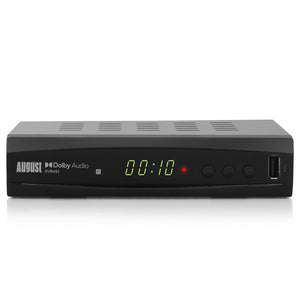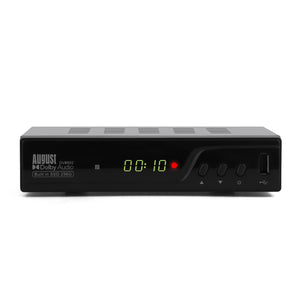The way we access entertainment has changed decade on decade ever since the inception of public radio broadcasts! We went from radio shows to national broadcasts and now entertainment from a world away is available in the palm of our hand 24/7. With terrestrial TV, satellite TV, IPTV, catchup and streaming all vying for our attention, there's a whole generation that don't know the joy of the humble set-top-box!
Let's fix that:
Terrestrial Television in 2024
First off, we need to make it clear what we mean when we say a Set Top Box lets you watch "TV". TV is split across many different forms now, and Set Top Boxes will generally only tune to one of them.
Terrestrial Television is TV which broadcast live across the nation using radio communication towers and relays. The signals are picked up by rooftop aerials that look like spiky metal sticks.
Satellite TV is TV broadcast live using relays on satellites, not earth. The signals are beamed back down to earth to peoples rooftop aerials that look like mini satellite dishes.
IPTV is live TV accessed through the internet. This isn't quite the same as streaming or catchup, as IPTV channels exist in the EPG and channel list rather than their own apps. The main thing is that they don't use an aerial, just internet connection.
Streaming and Catchup services are TV recorded or broadcast using the internet, but hosted elsewhere. To make it simple think of IPTV as your TV receiving the broadcast over the internet, while streaming is your TV receiving a live recording of the broadcast. Very similar, but apps and streaming are more segmented and not available "live" through an EPG.
So, accessing terrestrial TV is still a matter of aerials and radio signals, no matter how much IPTV and streaming takes off.
What a Set Top Box Does
In this environment of differing TV formats, a Set Top Box is designed to be a simple bridge to turn any screen into a full-on TV set. Let's think about the components needed to enjoy live TV from the radio towers mentioned earlier.
First, you need a way to receive the signal (An aerial)
Then, you need a way to decode that signal into something we can see and hear (a decoder / tuner)
Finally, we need a screen that can display that output (Your TV screen)
A Set Top Box is a tuner and decoder in this process. This means the Set Top Box does the heavy-lifting while the aerial and TV simple receive and display the data. The Set Top Box is the one forming the data into something useful, creating the EPG, giving channels names and times and descriptions, and allowing recording of live TV if you're feeling fancy.
Difference Between Set Top Box and Decoders
Because Set Top Boxes bridge that gap in the TV process, they are also sometimes called Decoders, Recorders, or Tuners! Don't let this confuse you, as they are simply more specific processes that a Set Top Box performs regardless.
For example the DVB482 "Dual-Tuner" box is a Set Top Box which can tune to two channels at once (Hence, "Dual-Tuner").
You may sometimes find decoders and tuners which aren't Set Top Boxes, like the DVB-T210 USB stick tuner, but you'll never find a Set Top Box which isn't a tuner or decoder.
The Final Distinction: Freeview vs Freesat
Since we now know a Set Top Box is a tuner and decoder for TV to connect to an aerial, there's one final hiccup to cover. That aerial could be a terrestrial or a satellite one, so which is correct?
This depends on your specific Set Top Box. Some are Freeview boxes. These use terrestrial aerials.
Others are Freesat boxes. These use an aerial from a satellite dish!
The role they play is identical, but the connections are completely different.
Read up more here if you're unsure!
Get the Right Set Top Box for You
Set Top Boxes are simple enough to understand, but there can be features and functions some have over others. For example, we mentioned earlier that DVB482 has a dual-tuner whereas other boxes may only have one!





Leave a comment